May 6, 2024 | 21:11 GMT +7
May 6, 2024 | 21:11 GMT +7
Hotline: 0913.378.918
May 6, 2024 | 21:11 GMT +7
Hotline: 0913.378.918
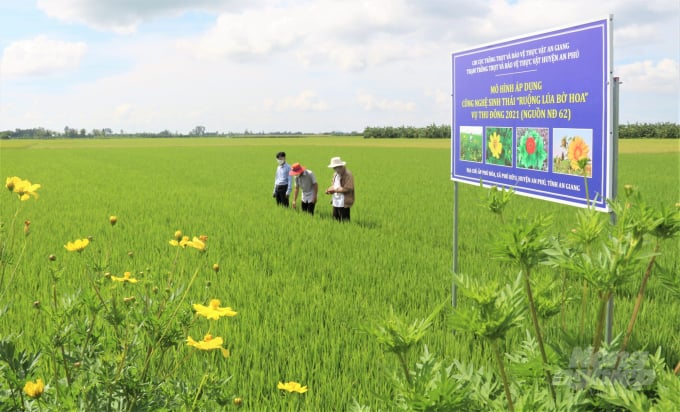
Applying ecological technology to production will help farmers create clean and high-quality agricultural products. Photo: Pham Hieu.
In the autumn-winter crop of 2021, An Phu district, An Giang province implements ecological technology through a "rice field with flower bank" model on more than 50 hectares, with three rice plant models and three fruit and vegetable models.
Mr. Nguyen Van Gau, who participated in the implementation of the "rice field with flower bank" model on his 6-hectare rice field, explained that the novel model helps lure some beneficial natural enemies to control pests in rice fields, thereby reducing pesticide use, contributing to the environmental, ecosystem, and farmer health protection, and improving the quality of agricultural products for consumers.
Mr. Gau shares his experience: "In order to implement the model effectively, farmers must dedicate a sufficient amount of rice field bank land to flower cultivation. Additionally, we must manage banky weeds manually."
Mr. Gau further stated that by implementing the "rice field with flower bank" concept correctly, the cost of plant protection agents will be significantly decreased. As a consequence, farmers spray pesticides just 2-3 times using the model, rather than the normal 5-7 times.
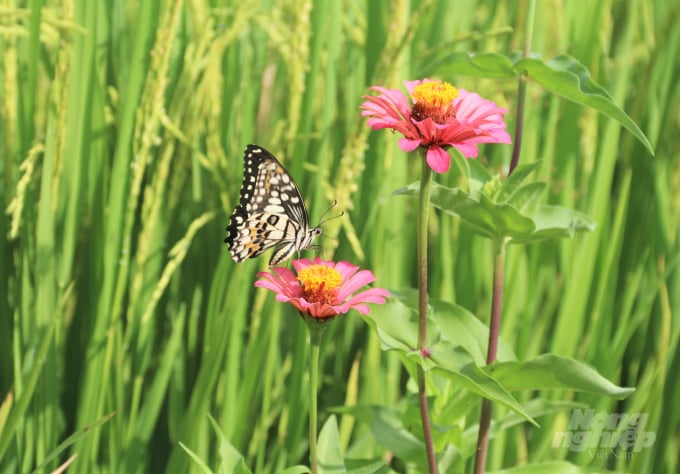
The model will attract some beneficial natural enemies to control pests in rice fields. Photo: Pham Hieu.
“ Each spray costs between VND 700,000 and 800,000 per hectare. I saved around VND 4 million in pesticide costs for every crop by implementing the "Rice field with flower bank" model. Locally, during the summer-autumn rice harvest, profit from rice fields using this model was around VND15 million per ha, whereas profit from rice fields not using this model was approximately VND 8-10 million per ha," Mr. Gau explained.
Due to the recent increase in the price of agricultural inputs, farmers have been driven to cut production costs in order to boost earnings. Traditional rice cultivation methods need a higher initial expenditure.
According to statistics from An Phu district's Crops Production and Plant Protection Station, the production cost and cost of 1 kg of rice implemented under the model of "rice field with flower bank" are between VND 500 and 700 less than in control rice fields. Currently, as compared to the control field, the most significant advantage and effect of the rice field using ecological technology is a reduction of more than 50% in pesticide costs for farmers.
Increases in the cost of agricultural inputs have raised the cost of agricultural output, adversely affecting people's production and economic operations. In various Mekong Delta provinces, including Ho Chi Minh City. Pesticide prices climbed by an average of 10% - 30% year on year in Can Tho, Vinh Long, An Giang, and Dong Thap among others, while certain individual medications jumped by 50%.
Apart from boosting economic benefits, using eco-technology in manufacturing enables farmers to produce clean, high-quality goods.
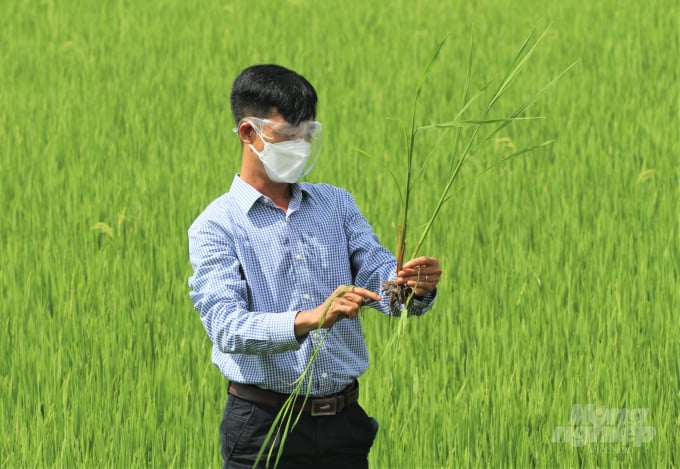
According to Mr. Nguyen Van Khang, "Rice field with flower bank" is one of the models that need to be replicated. Photo: Pham Hieu.
According to Mr. Nguyen Van Khang, technical staff of An Phu district's Crops Production and Plant Protection Station, practically all farmers employ all of the best production strategies in their fields: To begin, farmers adhered to regional seasonal suggestions. Second, from the start of the crop, individuals apply between 8 and 12 kg of seed per 1,000m2. Thirdly, farmers that follow the ecological technology model use a balanced approach to fertilization, using organic, inorganic, and micronutrient fertilizers.
"In particular, when ecological technology is used in the model of "rice field with flower banl," farmers need to use pesticides just 2-3 times every crop. People do not need to apply pesticides or planthoppers at all," Mr. Nguyen Van Khang stated.
Additionally, farmers incorporated a variety of other production methods, including "3 decrease (reduce seed sown, fertilizer, and pesticide use) 3 increase (increase yield, quality, and efficiency)" and "1 must (must use certified rice varieties or original strains recommended for production by the local agricultural sector) 5 reduce (reduce seed sown, fertilizer, and pesticide use, irrigation water, and post-harvest losses)".
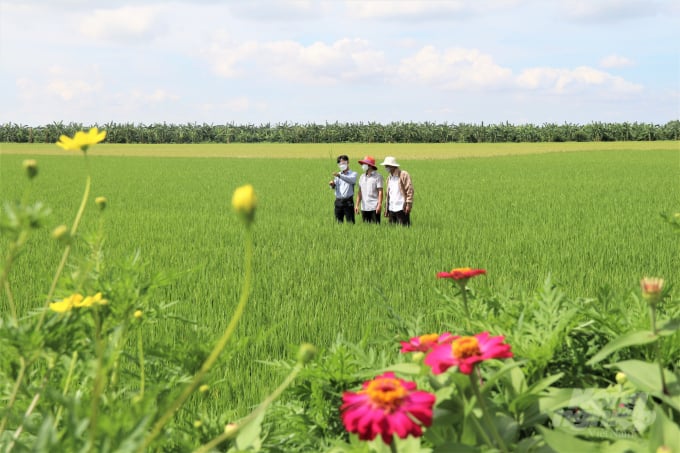
Applying ecological technology to production will help farmers create clean and high-quality agricultural products. Photo: Pham Hieu.
According to the technical team, the "rice field with flower bank" is one of the models that should be multiplied because agricultural inputs such as seeds, fertilizers, and pesticides are all increasing in price at the moment. Additionally, the rice purchasing market has increasingly stringent quality criteria, particularly with regard to pesticide residues.
Translated by Linh Linh
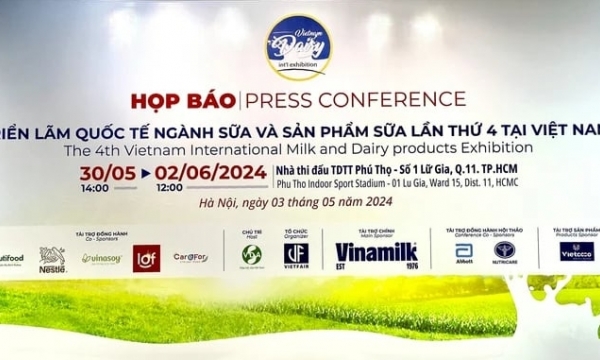
(VAN) The Vietnam Dairy Association (VDA) is leading and collaborating with the CP Exhibition and Advertising Company to organize the Exhibition.
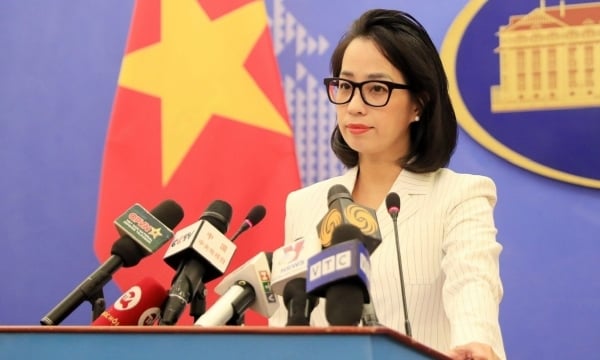
(VAN) Spokewoman of Ministry of Foreign Affairs shared Vietnam’s response over recent statements of Cambodian side over the implementation of Funan Techo canal project.
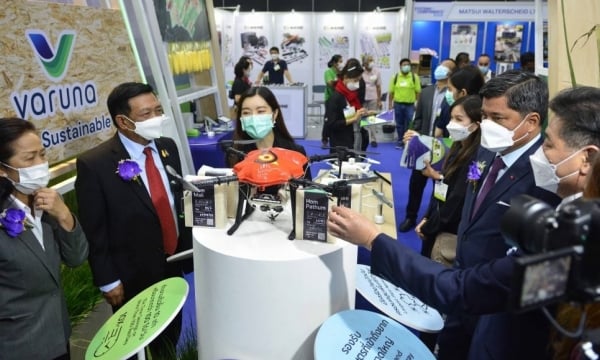
(VAN) Agritechnica Asia & Horti Asia 2024 takes place from May 22-24, 2024, at the Bangkok International Trade & Exhibition Centre (BITEC), Thailand.
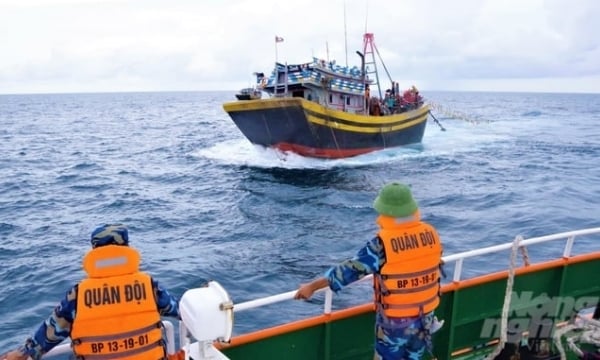
(VAN) Border Guard Command of Binh Thuan and Ba Ria- - Vung Tau coordinate to enhance strict management over fishing vessels to remove the EC 'yellow card'.
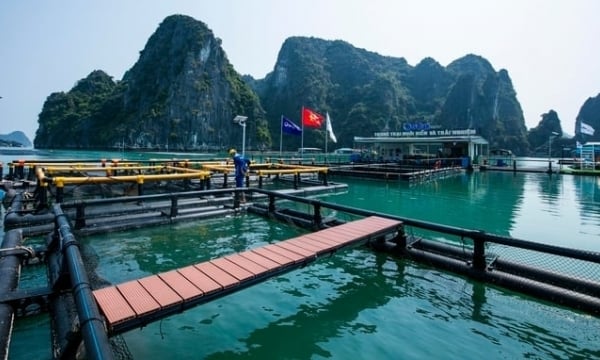
(VAN) With the aim of supporting the transition to HDPE aquaculture, STP Group introduced three support packages to provide fishermen access to new mariculture technologies.
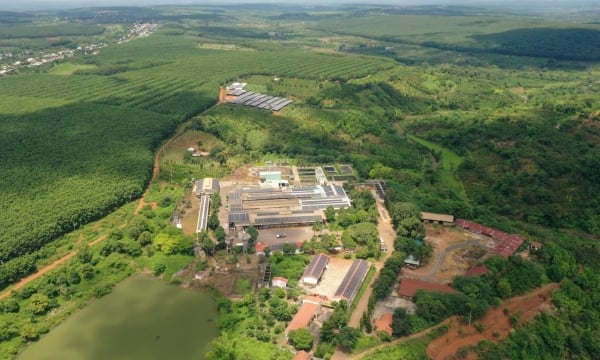
(VAN) The Vietnam Rubber Group (VRG) is collaborating with the Office of Sustainable Forest Management Certification and the Institute of Forestry Science to plan for implementation of EUDR regulations beginning in June 2023.
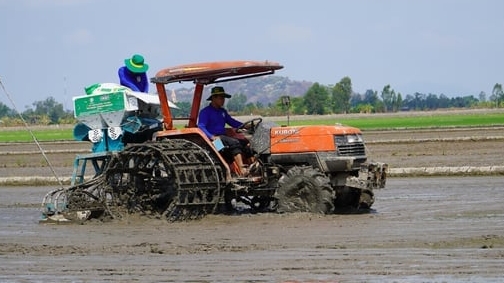
(VAN) According to the draft payment scheme for emission reduction results from the Project for one million hectares of high-quality rice, farmers in cooperatives and cooperative groups will be the primary beneficiaries.